Wondering why your CNC machining quotes seem so high? Equipment costs, skilled labor, and precision requirements drive expenses beyond what most people expect.
The most expensive items in CNC machining include five-axis machines costing $500,000-$2M+, specialized tooling, skilled operators, and high-grade materials for aerospace and medical applications requiring extreme precision.
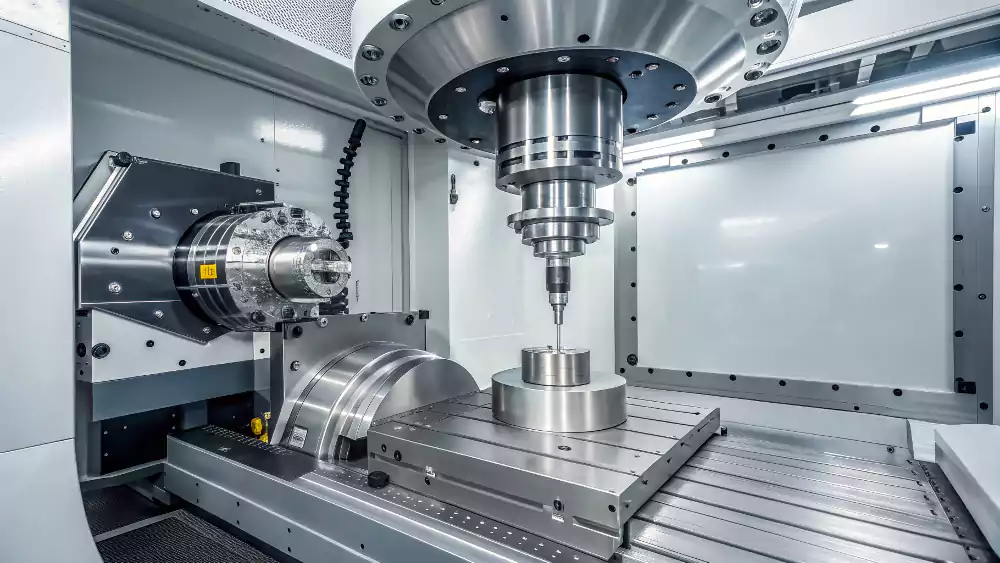
After building Allied Metal from the ground up, I have learned that understanding CNC costs helps engineers like David make better sourcing decisions. The equipment represents the largest single expense, but labor, tooling, and materials add significant costs. Let me break down where the money really goes in precision manufacturing.
What Is the Most Expensive CNC?
Many people think all CNC machines cost about the same. This assumption leads to sticker shock when they see quotes for precision work.
The most expensive CNC machines are five-axis machining centers and large horizontal boring mills, ranging from $500,000 to over $2 million depending on size, precision, and automation features.
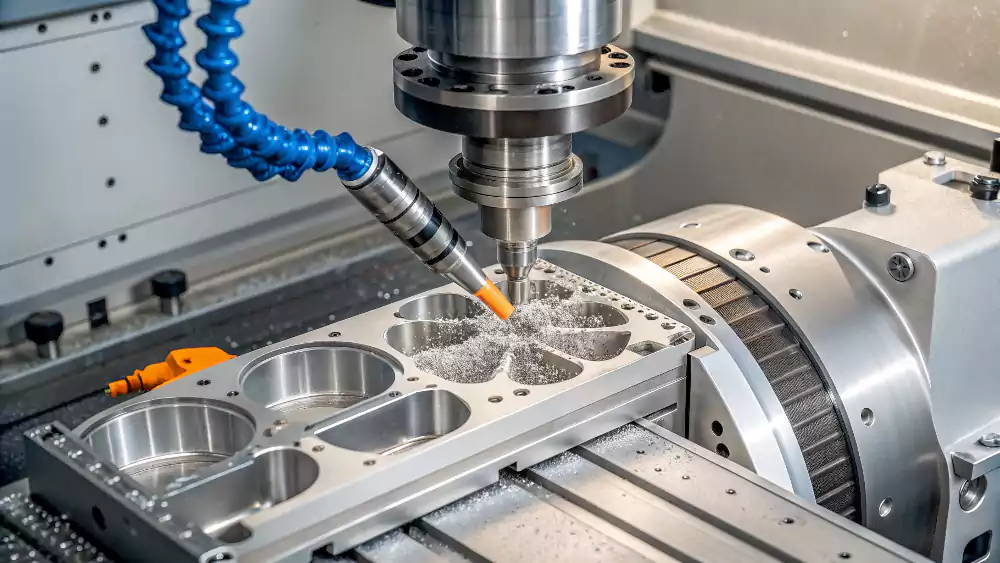
Five-Axis Machining Centers Lead the Cost Scale
Five-axis machines represent the pinnacle of CNC technology1 and pricing. These machines can position the cutting tool at any angle relative to the workpiece. The additional rotary axes require complex mechanical systems, advanced control software, and precise calibration equipment.
Entry-level five-axis machines start around $500,000 for basic models with limited travel and lower spindle speeds. Mid-range machines typically cost $800,000 to $1.2 million with better accuracy, larger work envelopes, and higher spindle speeds. Premium machines exceed $2 million with features like automatic tool changers, pallet systems, and sub-micron accuracy.
The control system alone costs $50,000 to $150,000 on these machines. Five-axis programming requires sophisticated CAM software that can cost $30,000 to $100,000 per seat. Operator training adds another $20,000 to $50,000 per person because five-axis programming and setup require specialized skills.
I have worked with machines across this entire price range. The expensive machines justify their cost through capability and productivity. A $2 million machine can often produce parts that are impossible on cheaper equipment. The precision, surface finish, and geometric accuracy enable applications that command premium pricing.
Large Horizontal Boring Mills and Specialty Machines
Horizontal boring mills2 for large aerospace components can exceed $3 million. These machines handle parts weighing several tons with positioning accuracy measured in microns. The combination of size and precision drives costs beyond typical machining centers.
Specialty machines for specific industries add unique costs. Gear hobbing machines, thread grinding machines, and optical component machines often cost $1 million or more. These machines serve narrow markets but enable manufacturing impossible with general-purpose equipment.
Swiss-type lathes for medical components represent another expensive category. High-end Swiss machines cost $400,000 to $800,000 but produce intricate parts with exceptional surface finish and dimensional accuracy. The medical device industry justifies these costs through strict regulatory requirements and premium pricing.
Installation and commissioning add 10-20% to machine costs. Foundation work, electrical installation, and initial setup require specialized contractors. Training, spare parts inventory, and initial tooling can add another $100,000 to $200,000 to the total investment.
What Is the Most Profitable CNC Product?
Profitability in CNC machining depends more on market requirements than manufacturing complexity. Understanding which products command premium pricing helps guide business decisions.
Aerospace and medical device components are the most profitable CNC products due to strict quality requirements, complex geometries, and regulatory compliance that justify premium pricing structures.
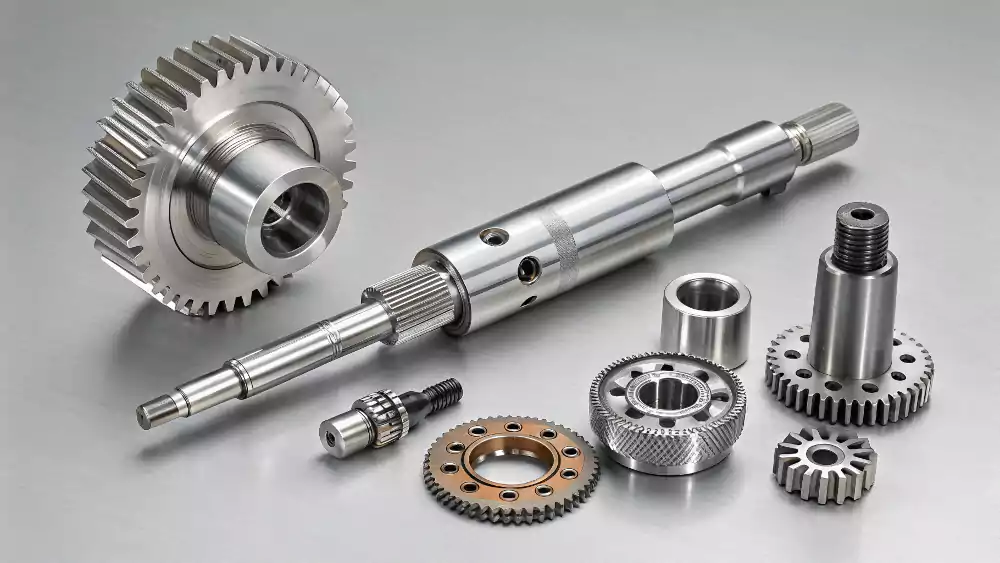
Aerospace Components Drive Premium Pricing
Aerospace parts command the highest prices in CNC machining because of stringent material requirements, complex geometries, and extensive documentation needs. Turbine blades, structural components, and engine parts often require exotic materials like titanium, Inconel, or carbon fiber composites.
Material costs alone can exceed $1000 per pound for aerospace-grade titanium or superalloys. Machining these materials requires specialized tooling, slower cutting speeds, and careful process control. A single turbine blade might require 20 hours of machining time on a five-axis machine worth $1.5 million.
Quality requirements add significant cost but enable premium pricing. Every aerospace part requires material certifications, dimensional inspection reports, and traceability documentation. AS9100 certification and NADCAP approval require ongoing audits and quality system maintenance. These overhead costs are reflected in part pricing.
I have machined aerospace components that sell for $10,000 to $50,000 each despite weighing only a few pounds. The combination of exotic materials, complex machining, and quality requirements justifies these prices. Aerospace customers pay premium prices because component failure can be catastrophic.
Medical Device Manufacturing Offers Consistent Margins
Medical device components provide excellent profitability through FDA requirements3 and biocompatibility needs4. Surgical instruments, implants, and diagnostic equipment require precision that commands premium pricing. The regulatory environment creates barriers to entry that protect margins.
Titanium implants represent a particularly profitable segment. Hip joints, spinal hardware, and dental implants require biocompatible materials and precise surface finishes. A single hip joint component might sell for $2000 to $5000 despite relatively simple geometry. The FDA approval process and liability concerns limit competition.
Surface finish requirements in medical applications often exceed aerospace standards. Ra values of 0.1 micrometers or better require specialized equipment and extended cycle times. Mirror finishes for optical components or surgical instruments require diamond turning or specialized polishing techniques.
Material traceability becomes critical in medical applications. Every component must be traceable to the original material heat and processing records. This documentation requirement adds administrative costs but enables premium pricing. Medical customers accept these costs because regulatory compliance is mandatory.
What Are the 7 Major Parts of a CNC Machine?
Understanding CNC machine components helps explain cost structures and maintenance requirements that affect operating expenses.
The seven major CNC machine parts are the machine bed, spindle system, control system, servo motors, linear guides, ball screws, and tool changing system, each contributing to overall capability and cost.
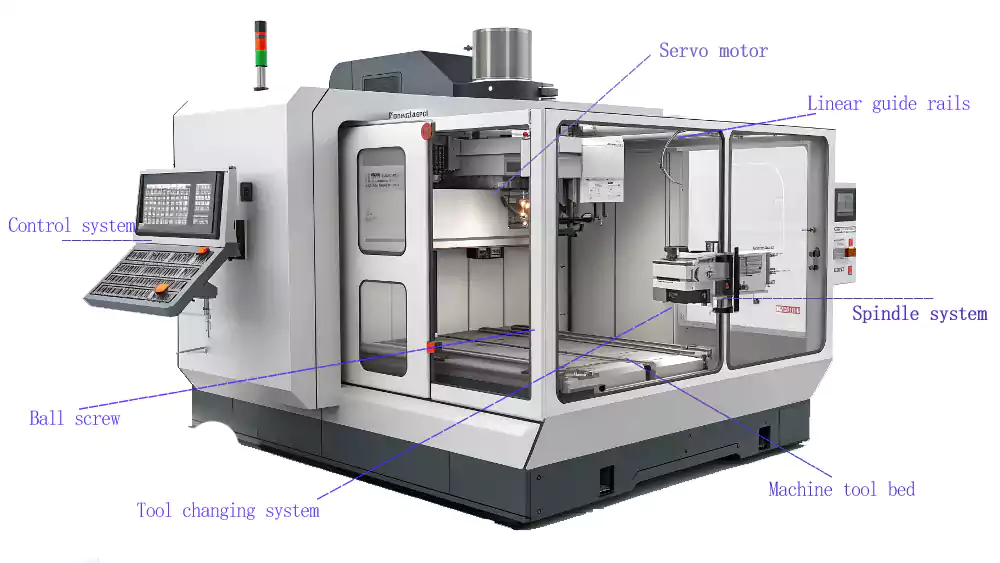
Structural Components and Motion Systems
The machine bed provides the foundation for all other components. Cast iron beds offer excellent vibration damping but add weight and cost. Polymer concrete beds provide similar damping with reduced weight but cost more initially. Welded steel beds are economical but may require additional vibration control measures.
Bed design affects machine accuracy and longevity. Box-way designs provide maximum rigidity but limit travel speed. Linear guide systems enable higher speeds but may sacrifice some rigidity. The choice depends on application requirements and cost constraints. Premium beds with stress-relief aging and precision grinding can cost $100,000 or more.
Linear guides replace traditional ways on modern machines. Ball-type guides offer smooth motion but require protection from contamination. Roller guides handle heavier loads but may have more friction. Magnetic guides eliminate mechanical contact but require sophisticated control systems. Guide quality directly affects positioning accuracy and surface finish.
Ball screws convert rotary motion to linear motion with high precision. Ground ball screws provide better accuracy than rolled screws but cost significantly more. Preloaded screws eliminate backlash but require more maintenance. Servo motors driving ball screws must provide sufficient torque while maintaining position accuracy under varying loads.
Control and Power Systems
The CNC control system represents the machine's brain and often costs $50,000 to $150,000 on high-end machines. Modern controls integrate motion control, spindle control, tool management, and safety systems. Programming capability, processing speed, and user interface quality vary significantly between manufacturers.
Servo motors provide precise positioning for each axis. AC servo motors offer better speed regulation than DC motors but require more complex drives. Direct-drive motors eliminate mechanical transmission but cost more initially. Motor sizing affects both capability and cost - larger motors enable faster acceleration but consume more power.
Spindle systems vary widely in cost and capability. Belt-driven spindles are economical but limit speed and precision. Direct-drive spindles eliminate mechanical transmission but cost more. High-speed spindles for aluminum machining can cost $100,000 or more. Spindle cooling, tool holding, and speed range all affect pricing.
Tool changing systems automate production but add significant cost. Umbrella-type changers are compact but limit tool capacity. Chain-type changers hold more tools but require more space. Tool management software tracks tool life and optimizes tool usage but requires skilled programming.
Why Is CNC Machining So Expensive?
CNC machining costs reflect the complexity, precision, and skill required for successful operations. Understanding these factors helps justify pricing to customers.
CNC machining is expensive due to high equipment costs, skilled labor requirements, precision tooling, quality materials, and overhead expenses necessary for maintaining accuracy and consistency.
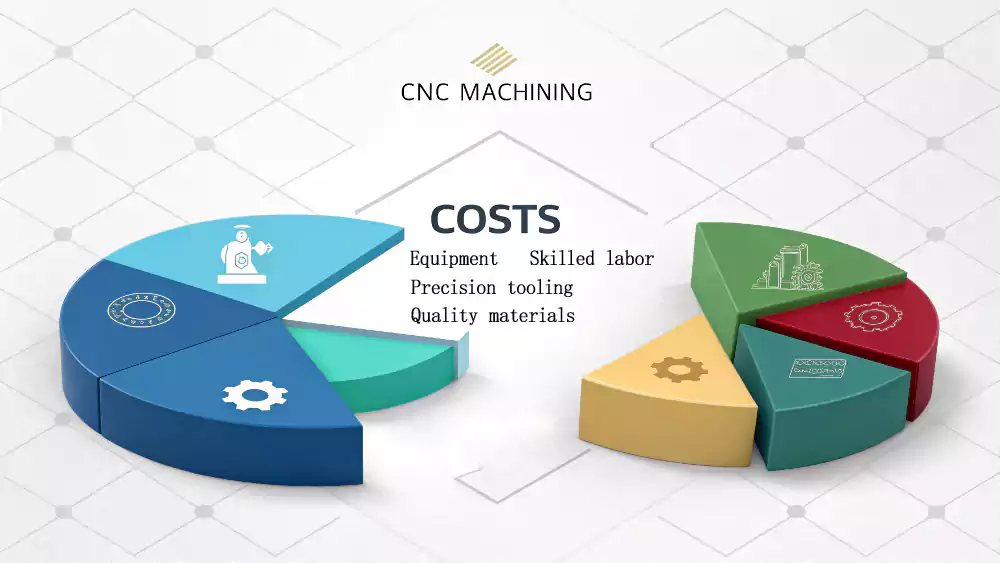
Equipment and Infrastructure Costs
Machine acquisition represents only the beginning of CNC investment. A $500,000 machine requires foundation work, electrical installation, and environmental controls that can add $100,000 to installation costs. Climate control maintains dimensional stability while chip removal systems prevent contamination.
Machine financing typically costs 8-12% annually depending on credit and equipment type. A $1 million machine costs $80,000 to $120,000 per year in financing alone. Insurance, maintenance, and utilities add another $50,000 to $100,000 annually. These fixed costs must be recovered through part sales.
Tooling inventory represents a significant ongoing expense. Cutting tools for one five-axis machine can cost $50,000 to $100,000 initially. Tool life varies from minutes to hours depending on material and cutting conditions. High-performance tools often cost $200 to $500 each and may last only a few parts.
Measuring equipment ensures quality but adds substantial cost. Coordinate measuring machines cost $200,000 to $500,000 for models suitable for production measurement. Tool presetters, surface roughness testers, and hardness testers add another $100,000 to $200,000. Calibration and maintenance of measuring equipment requires ongoing expense.
Labor and Skill Requirements
Skilled CNC operators command $25 to $40 per hour depending on experience and location. Five-axis operators often earn $35 to $50 per hour due to specialized skills. Programmers with CAM experience earn $30 to $50 per hour. Setup specialists for complex jobs may earn even more.
Training costs are substantial and ongoing. Five-axis programming training costs $10,000 to $20,000 per person. Machine-specific training adds another $5,000 to $10,000. Ongoing education keeps pace with technology changes but requires time away from production. High turnover in skilled positions increases training costs.
Programming time often equals or exceeds machining time for complex parts. A five-axis part might require 40 hours of programming for 20 hours of machining time. CAM software licenses cost $30,000 to $100,000 annually per seat. Post-processor development and optimization add additional programming overhead.
Quality inspection requires skilled personnel and significant time. First article inspection might take 4-8 hours for a complex part. In-process inspection during production adds 10-20% to cycle times. Documentation requirements for aerospace and medical applications require additional skilled labor.
Material and Quality Costs
Aerospace and medical materials cost 5-10 times more than standard grades. Titanium stock might cost $50-100 per pound compared to $5-10 for steel. Material certificates, heat treatment records, and chemical analysis add documentation costs. Special handling and storage requirements increase overhead.
Waste and scrap represent hidden costs in precision machining. Complex parts might have 80-90% material removal ratios. Expensive materials make scrap costs significant. A scrapped aerospace part might waste $5,000 in material plus 20 hours of machining time.
Quality requirements drive costs through inspection, documentation, and rework. Coordinate measuring might add 2-4 hours per part for complex geometries. Material review boards evaluate nonconforming parts, adding engineering and administrative costs. Customer-required documentation takes time to prepare and review.
Certification and compliance costs are ongoing expenses. AS9100, ISO 13485, and NADCAP certifications require annual audits, training, and system maintenance. These overhead costs must be allocated to parts produced under these quality systems. The investment is substantial but enables access to premium markets.
Conclusion
CNC machining costs reflect equipment investment, skilled labor, precision tooling, and quality requirements necessary for producing complex, high-precision components in demanding applications.
-
Discover how CNC technology revolutionizes production, offering insights into automation and precision engineering. ↩
-
Explore this link to understand how Horizontal boring mills enhance precision and efficiency in aerospace manufacturing. ↩
-
This resource will provide insights into how FDA regulations shape the profitability and pricing in medical device manufacturing. ↩
-
Learn about the essential biocompatibility requirements that ensure safety and effectiveness in medical devices. ↩


Whoa, free PHP100? Gotta check that out! Signed up via taya777free100. Hope I can turn that into something bigger!